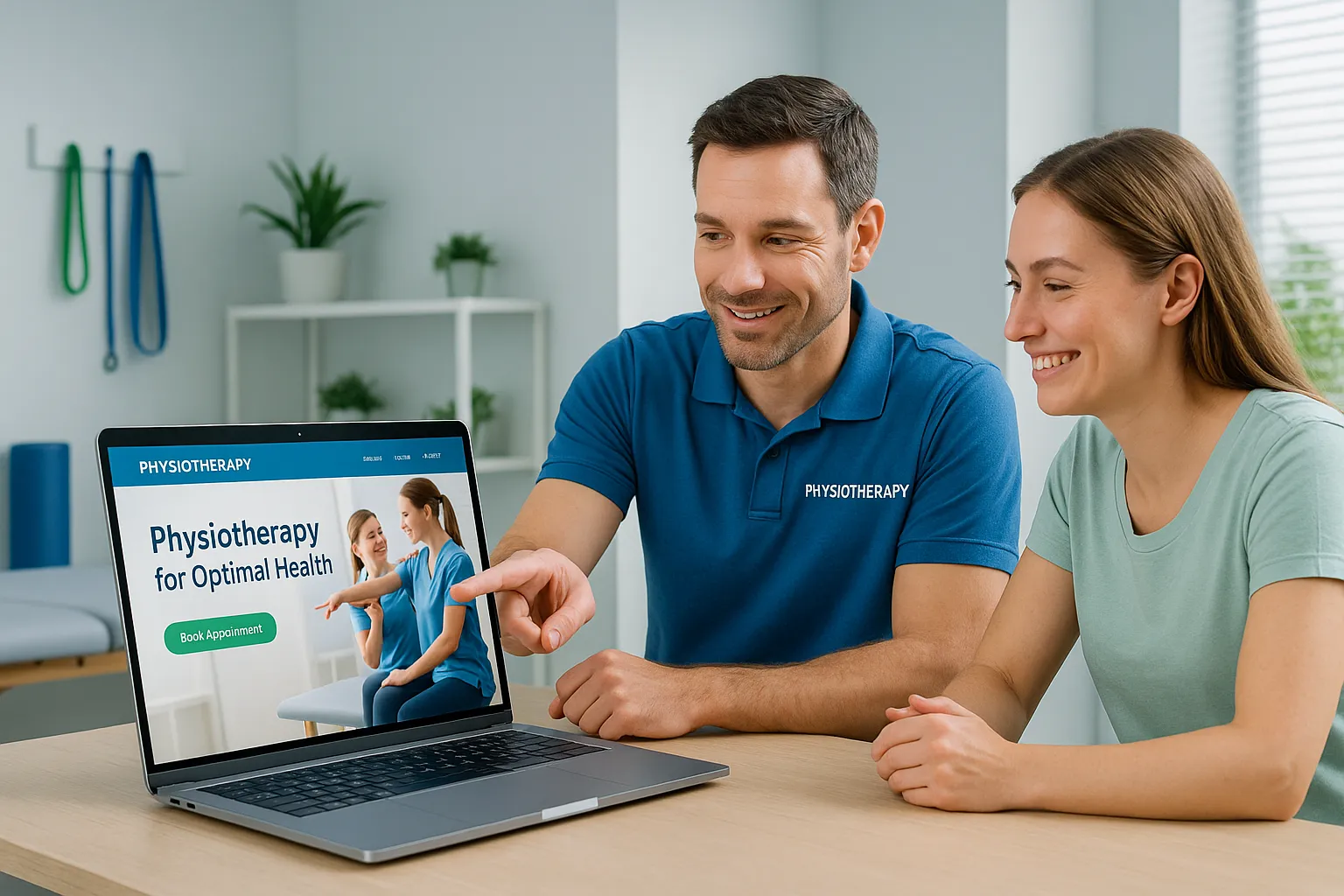
Rated Excellent by the Customers ★ ★ ★ ★ ★
5 Tips to Create Amazing Physiotherapy Websites
- June 16, 2025
Your website is more than just a digital brochure in today’s digital healthcare world; it’s your best way to get new patients. After examining data from hundreds of physiotherapy clinics and thousands of patient contacts, here are five tactics that have been proven effective.
1. Use clever design to build trust
It’s no longer enough for a physiotherapy website design to be slick to win patients’ trust. Healthcare websites today need to strike a balance between being professional and authentic.
What Works:
- Use real team photos instead of stock photos
- Video introductions of professionals
- Tours of virtual clinics
- Clear credentials and areas of expertise
Case Study: One clinic experienced a 47% rise in booking conversions after replacing stock photographs with real team content and adding short films of practitioners introducing themselves.
Pro Tip: Be honest about your facility; patients prefer honesty to perfection.
2. Make the patient’s journey as good as it can be
Your website should make it easy for patients to go from their first visit to making an appointment. To do this, you need to know how modern patients make choices.
Important Parts:
- Service descriptions that are easy to understand and don’t use medical terms
- Clear pricing information, even if it’s just ranges
- Insurance information that is easy to find
- Easier way to book
Recent data reveal that clinics that openly disclose their prices receive 32% more interaction and 28% more qualified leads.
3. Write content that helps
Content shouldn’t simply be there for SEO; it should also help patients and answer their questions.
A good content strategy is
- Guides for treating certain conditions
- Expectations for the recovery timetable
- Videos showing how to do exercises
- Real results from successful patients
- Guides for insurance and payment
Keep in mind that quality is more important than quantity. Ten generic posts don’t do as well as one well-written, functional piece.
4. Use innovative technology
It’s crucial to strike the perfect balance between automation and human touch, even as technology plays a vital role.
Essential Features That Make a Difference:
- Online booking systems (37% more new patients)
- Safe patient portals
- Design that works on mobile devices
- Pages that load quickly (less than 3 seconds)
- Simple ways to get in touch
Tip: Ensure your booking system functions smoothly on mobile devices. Seventy-six percent of healthcare searches occur on phones.
5. Make Local Search Optimisation a Priority
Local SEO isn’t just about achieving a high ranking; it’s also about attracting the ideal patients in your area to find you.
Local SEO Strategies That Work:
- Make your Google Business Profile better
- Get and handle reviews from patients
- Make information that is specific to each place—form collaborations with local healthcare providers.
- Keep your contact information the same.
A Story of Success: A physiotherapy clinic that used these local SEO tips saw:
- 215% more people saw the business in the area, and 167% more people asked for directions.
- 89% more bookings from organic sources
- Putting it into practice in the real world
What implementation usually looks like is as follows:
The first 30 days:
- Check how well your current website is working
- Change the main design parts
- Start tracking fundamental things
Set up a Google Business Profile in 60 to 90 days:
- Make material that is the basis of your work
- Make it possible to book online
- Make it better for local search
- Start getting reviews from patients
Tip: Work on one area until it’s flawless before going on to the next. When you try to do too many things at once, you usually get average outcomes all around.
How to Tell if You’re Successful
- Keep an eye on these critical numbers:
- Making appointments for new patients
- The conversion rate for websites
- Visibility in local searches
- Scores from patient feedback
- Rate of patients who come back
Looking Ahead
The physiotherapy website landscape continues to evolve. Stay ahead by:
- Embracing video content
- Implementing secure telehealth options
- Adding interactive patient education tools
- Focusing on mobile-first design
Remember: Your website isn’t just about looking professional – it’s about converting visitors into patients while providing real value along the way.
While costs vary, expect to invest $3,000-$15,000 for a professional website that converts. The return on investment typically shows within 3-6 months.
Major updates every 2-3 years, with monthly content updates and weekly maintenance checks.
Online booking consistently ranks as the most crucial feature, followed by mobile responsiveness and clear service information.

Website and Digital Marketing Solutions for Physiotherapists and Cancer Rehabilitation Physiotherapists
Contact Us
- info@physiowebcare.com
- I work from beaches and hills!
- Skype me for a call
Get Connected









